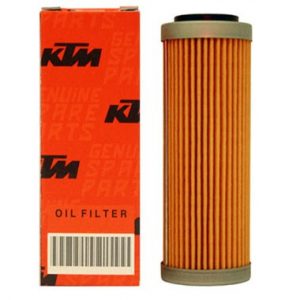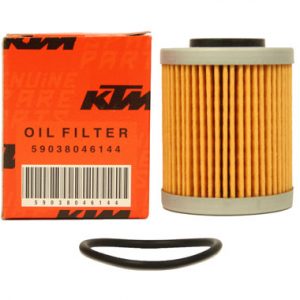KTM Motorcycles
An Austrian based company that was founded in 1934 by engineer Hans Trunkenpolz in Mattighofen. KTM started out as a metalworking shop and was named Kraftfahrzeug Trunkenpolz Mattighofen. In 1953 KTM began production of motorcycles, with only 20 employees, motorcycles were built at the rate of three per day, by 1955 KTM was renamed Kronreif & Trunkenpolz Mattighofen when a businessman named Ernst Kronreif became a major shareholder of the company. During the early years of the motorcycle production at KTM, almost all components for the motorcycles were built in-house by KTM. KTM is most commonly known for its off-road motorcycles though in recent years it has expanded into street motorcycle production. Hans Trunkenpolz died in 1962 of a heart attack with his son Erich taking his place in the company.
In the last few years KTM has gained more success in motorsports by dominating rally-raid events such as the Paris-Dakar Rally and the Atlas-Rally. 2003 saw KTM evolving through popularity towards sponsoring and supporting Road Racing in various capacities, with the most successful results stemming from their Supermotard or Supermoto efforts.
KTM offers a range of different engines for its larger motorcycles, all liquid-cooled.
KTM’s official company/team colours are Orange, Black and Silver. To create a strong brand identity, all competition-ready KTMs come from the factory with bright orange plastic with ‘KTM’ emblazoned on the side of the radiator shrouds. All KTM bikes also come from the factory with a Motorex sticker on the outside of the motor. All first fills of ioil come from Motorex as well. Some official KTM teams use different colours for their bikes, most noticeably in the Dakar Rally.
KTM are striving forward with passion and commitment to keep the two-strokes continuing in production of these engines since other manufacturers have decided to discontinue their 2-stroke models. KTM are looking at the enviornmental factors that are forcing the factors of removing the two-stroke engines from the market, with the help of the DFI (Direct Fuel Injection) system by eliminating almost any unburnt fuel escaping the combustion process and entering the atmosphere. 2011 KTM changed the look of their two-strokes models after taking up a very high proportion of the 2-stroke bike market, as from 2012 they will be adding linkage rear shocks for the first time, on their SX and XC models.
Showing all 2 results


